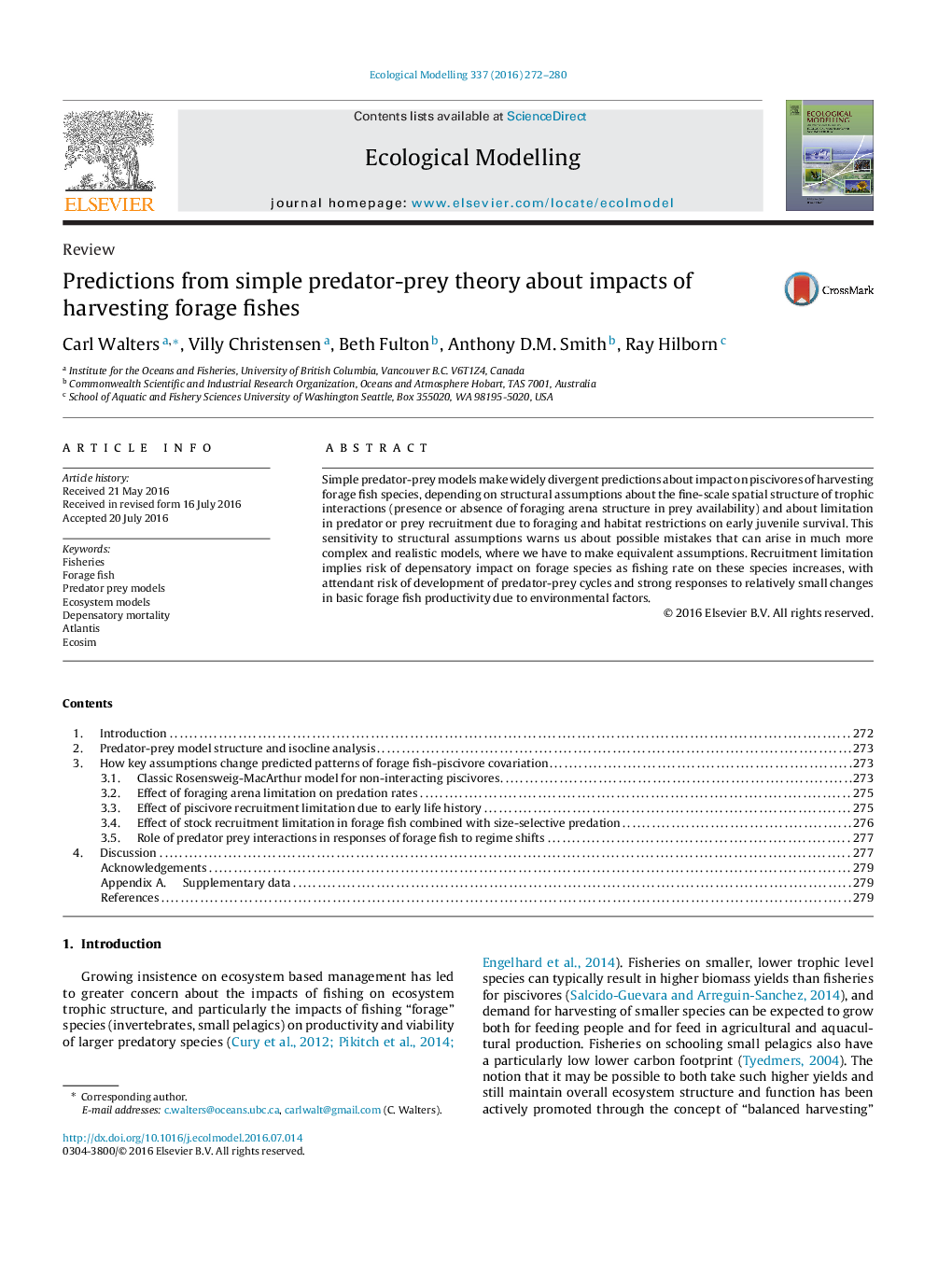| Article ID | Journal | Published Year | Pages | File Type |
|---|---|---|---|---|
| 6296097 | Ecological Modelling | 2016 | 9 Pages |
Abstract
Simple predator-prey models make widely divergent predictions about impact on piscivores of harvesting forage fish species, depending on structural assumptions about the fine-scale spatial structure of trophic interactions (presence or absence of foraging arena structure in prey availability) and about limitation in predator or prey recruitment due to foraging and habitat restrictions on early juvenile survival. This sensitivity to structural assumptions warns us about possible mistakes that can arise in much more complex and realistic models, where we have to make equivalent assumptions. Recruitment limitation implies risk of depensatory impact on forage species as fishing rate on these species increases, with attendant risk of development of predator-prey cycles and strong responses to relatively small changes in basic forage fish productivity due to environmental factors.
Related Topics
Life Sciences
Agricultural and Biological Sciences
Ecology, Evolution, Behavior and Systematics
Authors
Carl Walters, Villy Christensen, Beth Fulton, Anthony D.M. Smith, Ray Hilborn,
